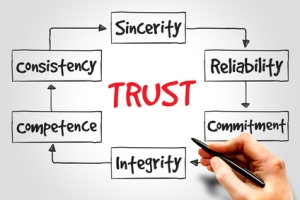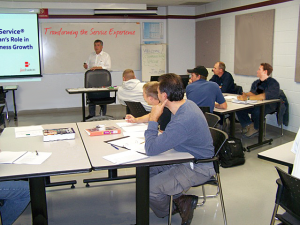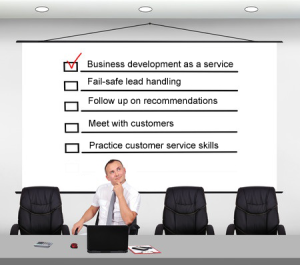 In my last blog I talked about the 4 questions to ask when evaluating “sales” training for technicians. In this blog, I would like to look more closely at the inverse relationship between trust and technique when it comes to promoting services to customers.
In my last blog I talked about the 4 questions to ask when evaluating “sales” training for technicians. In this blog, I would like to look more closely at the inverse relationship between trust and technique when it comes to promoting services to customers.
I feel that the technician is in a unique position to identify opportunities that the customer can act on to help them operate their facilities and/or processes more effectively. In fact, I believe that technicians have an obligation to reach out to the customer to discuss these opportunities to help and to assist them in making informed decisions. To me, this really isn’t selling at all, but rather an important part of the service. And, this approach has a significant benefit. My experience indicates that service firms that engage their technicians in this way will create a sustainable competitive advantage and be rewarded with more business, higher customer satisfaction and unprecedented levels of retention.


 Business development by service technicians is often regarded by management as a tactic to be employed to build new business, rather than a differentiating business strategy to impart a superior service experience. Below are 4 questions to ask yourself to determine which approach your organization employs.
Business development by service technicians is often regarded by management as a tactic to be employed to build new business, rather than a differentiating business strategy to impart a superior service experience. Below are 4 questions to ask yourself to determine which approach your organization employs. Service managers often ask me if they should attend our
Service managers often ask me if they should attend our  It’s happened to all of us. A preventable failure, a lost customer, and all this could have been avoided for the price of a cup of coffee. I learned this lesson many years ago interviewing customers for a client. I asked a range of questions about performance, suggested ways to improve technician service, keep customers and address some of the challenges they were facing or expected to face in the future. Our aim was to develop a service strategy that better anticipated and served the needs of their customers.
It’s happened to all of us. A preventable failure, a lost customer, and all this could have been avoided for the price of a cup of coffee. I learned this lesson many years ago interviewing customers for a client. I asked a range of questions about performance, suggested ways to improve technician service, keep customers and address some of the challenges they were facing or expected to face in the future. Our aim was to develop a service strategy that better anticipated and served the needs of their customers. If you are actively engaging your technicians in promoting your services, here are 5 questions to help you evaluate how proactive your service team is. These questions are part of our ‘How Proactive is Your Service Team’ Checklist.
If you are actively engaging your technicians in promoting your services, here are 5 questions to help you evaluate how proactive your service team is. These questions are part of our ‘How Proactive is Your Service Team’ Checklist. Frustrated by the poor quality of the information provided by your technicians on work orders? The importance of the quality of the work order resolution description is often overlooked. The fact is the quality of this information is very important! Below are 4 easily remembered components that your technicians can include to better communicate the value of the work they have performed. The four components are captured using the acronym CARE.
Frustrated by the poor quality of the information provided by your technicians on work orders? The importance of the quality of the work order resolution description is often overlooked. The fact is the quality of this information is very important! Below are 4 easily remembered components that your technicians can include to better communicate the value of the work they have performed. The four components are captured using the acronym CARE.
 Spontaneous Empathy – anticipating concerns and addressing them before the customer raises them. I recently observed a server at a national (and very popular) coffee shop chain use this technique to great effect. It was a few weeks ago and I still reflect on the value of the gesture.
Spontaneous Empathy – anticipating concerns and addressing them before the customer raises them. I recently observed a server at a national (and very popular) coffee shop chain use this technique to great effect. It was a few weeks ago and I still reflect on the value of the gesture.


